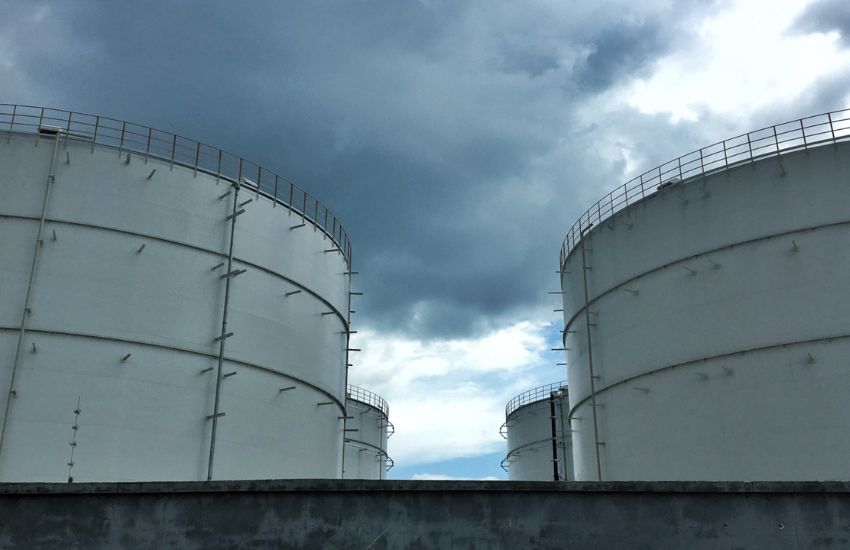Greater Singapore Tank Storage Market Outlook 2018 – Part 2
Click here if you missed Part 1 of the article “Greater Singapore Tank Storage Market Outlook 2018”.
Singapore naturally has a vast deficit of fuel oil as local production is only modest while demand is of unparalleled size. Large imports of fuel oil allow Singapore to fulfill its hub function.
The impact of IMO 2020 – a game changer for the Singapore tank storage market
Fuel oil demand primarily comes from marine bunker activity and is therefore submissive to a large change following the IMO 2020 regulations, which require lower sulphur contents to be used in marine fuel.
Fuel oil generally is high on sulphur and will thus see a sharp decline in demand from 2020 onwards when high-sulphur fuel oil is replaced by, among other alternatives, diesel oil. After 2020 demand will gradually pick up as a result of growing economies and populations, but its share in marine bunkering will remain low.
The immediate switch from fuel oil to alternatives will provoke a surplus of the product for most countries in the region, while Singapore will continue to have a deficit, be it smaller than before. The region as a whole will have a surplus in the short run, lowering fuel oil trade flows from other continents to Asia.
Trade imbalances will continue intensifying tank storage usage
Diesel is Far East and the ISC’s largest refinery output category and together account for roughly 50% of the total. The main drivers for diesel demand are passenger cars with diesel engines, marine bunkers, building heating, and industry. Passenger car fleet developments are of great importance to the demand for diesel. Since diesel does not propel the majority of cars in the Far East and the ISC, the impact of car emissions regulations on diesel demand is limited. With growing populations and developing economies, the number of diesel-powered passenger cars is set to further increase in the future, despite more efficient engines, the increasing share of electric vehicles in the passenger car fleet, and other environmental initiatives. IMO 2020 regulations, will increase the demand for diesel in the maritime sector. As of 2017 most of the region’s major producers and consumers of diesel have surplusses with the largest ones in China, India, and South Korea. Australia, on the other hand, has quite a substantial deficit, meeting most of its diesel demand with imports.
China is the region’s largest producer of gasoline, followed by India and Japan. India and China have seen tremendous growth in their gasoline production, both having doubled their output since 2009. The primary demand driver for gasoline is passenger cars, accounting for virtually the entire gasoline consumption. Passenger car fleet developments are therefore of even greater importance to gasoline than to diesel. Chinese demand for gasoline has more than doubled over the last decade despite strict emissions regulations but hasn’t outgrown production yet. Demand for gasoline is very sensitive to changes in car fuel usage, but the growing Chinese economy offsets the strict fuel policies of the country. India’s demand is still relatively low but growing rapidly, while Japanese demand naturally seems to be in decline. As for diesel, most of the major producers/consumers of gasoline had surpluses of the product in 2017.
Fuel oil has historically been the Far East and the ISC’s third largest oil product in terms of demand. Simultaneously it’s Singapore’s largest product in terms of demand and trade volumes since the country acts as the region’s largest marine bunker fuel hub. Local production is negligible, however, and Singapore fulfills demand through imports. The region has a deficit in the product despite increasing local production. Most fuel oil is produced by China and Japan, with China increasing its production while Japanese production is in decline. South Korean and Indian production is likewise in decline. Due to its hub function Singapore has the largest demand for fuel oil in the region, as a variety of ships from many different countries come to Singapore in search of the right propellant. China comes second in terms of demand, while Japanese fuel oil demand is only a third of what it was half a decade ago.
Conclusion
Relevant market fundamentals for the oil storage business are the shape of the forward curve, the competitive market structure, and the logistical factors of supply, demand, imbalances, and trade flows. Tank terminals are part of the oil products supply chain and therefore logistical factors such as local product demand, regional refinery output, imbalances, and trade flows are very relevant. Developments in these factors, as well as new regulations, influence the demand and requirements for tank terminal capacity.
Singapore Tank Storage Market Study 2018
Based on extensive market research, Insights Global – in partnership with ener8 – has produced a +75 page report providing insights into the Tank Terminal Market in both Singapore and the greater Singapore area.
Download your free eBook to learn more and get valuable insights.
Photo Credit: Rudigerstal


